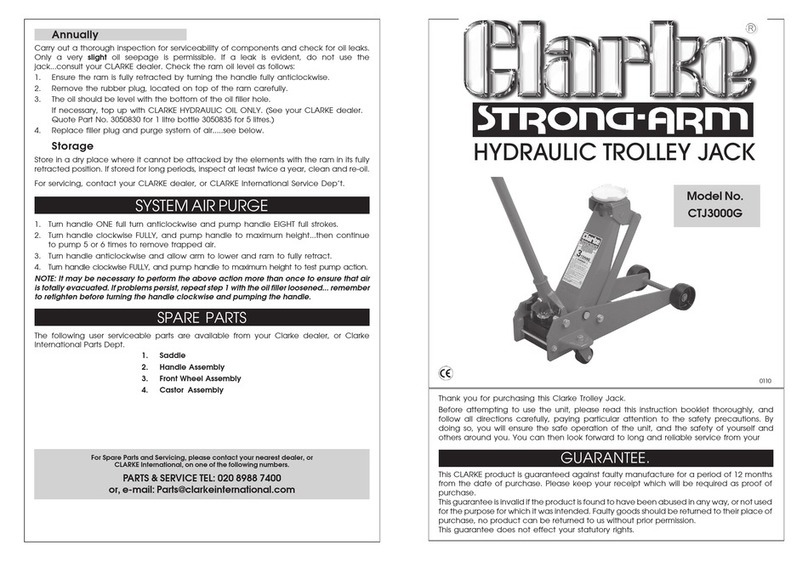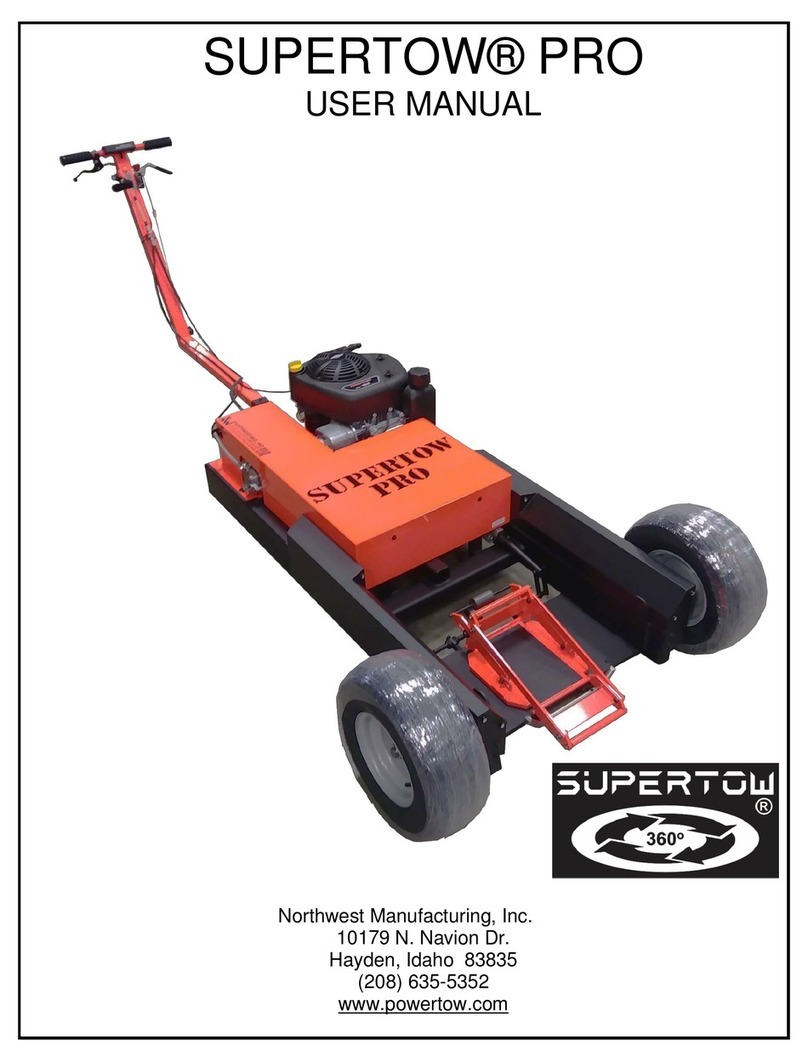
ASSEMBLY, continued
5) Remove 3 bolts from handle
bracket at rear of chassis.
5a) Clip tie-wraps holding down
handle (4 total).
5b) Carefully remove screws on the
rear handle support (2 screws each
side).
5c) While holding handle, slide out
wooden support
5d) Rotate handle and set bottom of
handle into the handle bracket (make
sure throttle and control Levers are
right side up). Hold in place.
5e) While holding handle in place,
hand-tighten the shorter of the 3
handle bolts removed in previous
step. This may require rocking the
handle slightly while turning to help
ease bolt in place.
5f) Hand-tighten the upper handle
bolt.
5g) Slip clutch cable clamp onto
lower handle bolt. Fully tighten this
bolt.
5h) Fully tighten the other 2 handle
bolts.
6) Remove screws from the center
wooden support. Remove support.
Carefully use box cutter to remove
protective packaging from handle.
7) Remove screws on front support
(2 each side). The sides are now
free to remove.
8) Connect Shift and Release Cables
at top of handle. Slide collar on cable
back and slip over ball on lever (x2).
9) Connect Clutch Cable. Cable is
preset at factory; tighten to nut and
remove protective tape.
Check large cable nut on back of
chassis cover, use 15/16” wrench to
tighten.
10) Fill with oil
11) Fill with gasoline (non-ethanol
unleaded gas or 100LL).
12 place an end panel at the front of
the machine to act as an exit ramp.
Support ramp with wooden supports
removed in previous steps.
13) Put throttle in “Prime” position
and turn key. After engine starts,
move throttle to desired speed.
14) Shift into “Forward”and gently
squeeze clutch handle.
15) Drive tug off of crate.




























